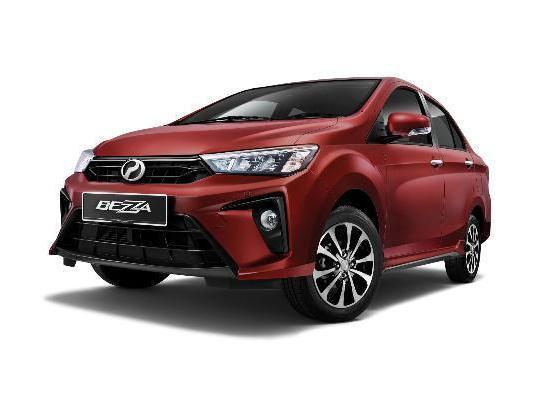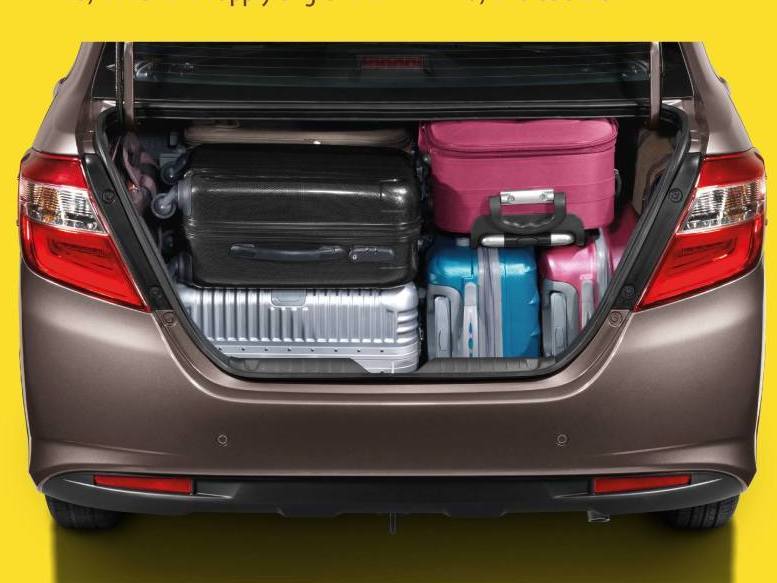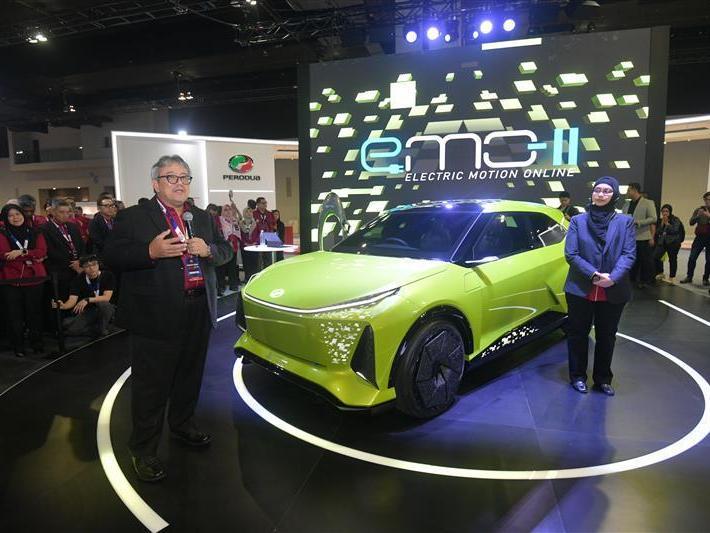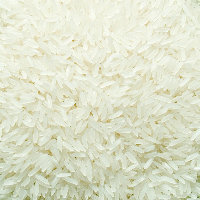Q
how much is bezza perodua
Honda's Civic Type R, that iconic hot hatch king of front-wheel drive, rocks a 2.0-liter VTEC turbocharged engine in both FK8 and FL5 generations here in Malaysia. The factory speed limiter's set at 272 km/h, but let's be real, your actual top end might vary a bit depending on Malaysia's tropical heat, the road you're tearing up, or how the car's been dialed in. What really makes this thing sing, though, is that 6-speed manual box paired with a limited-slip differential – it carves up corners with laser precision, and hey, being the front-wheel drive record holder around the Nürburgring Nordschleife? That's all the proof you need of its track cred.
To all you Malaysian petrolheads out there, remember: any high-speed fun belongs on a closed circuit. And with our constant heat, keeping an eye on that turbo's cooling is a must – regular maintenance isn't just a good idea, it's critical. Now, sure, rivals like the VW Golf R or Hyundai i30 N pack all-wheel drive, but the Civic Type R? It holds its own in the bends with some seriously trick suspension geometry, maintaining insane levels of grip. That whole front-wheel drive vs. all-wheel drive tech battle? Total catnip for us performance junkies to dive into.
Special Disclaimer: This content is published by users and does not represent the views or position of PCauto.
Related Q&A
Q
What is the fuel consumption of Perodua Bezza 2018?
The fuel efficiency of the 2018 Perodua Bezza varies depending on the engine configuration. The official fuel consumption figure for the 1.0-liter 1KR-VE three-cylinder engine is 22.8 km per liter (approximately 4.39 liters/100 km), while the 1.3-liter 1NR-VE four-cylinder version delivers 21.3 km per liter (around 4.69 liters/100 km). These figures are based on Malaysian road standard test conditions, and actual fuel consumption may vary slightly depending on driving habits, road conditions, and vehicle maintenance status. As an entry-level sedan focused on affordability and practicality, the Bezza's fuel-saving performance benefits from its lightweight body design and efficient engine tuning, making it particularly suitable for city commuting. To further optimize fuel efficiency, it's advisable to keep up with regular maintenance, use the appropriate viscosity oil, and avoid aggressive driving behaviors like rapid acceleration or sudden braking. In the same vehicle class, fuel efficiency is typically influenced by factors such as engine technology, body weight, and transmission matching, so it's worth comparing the technical features of different brands when making a purchase decision.
Q
What engine is in the 2018 Bezza?
The 2018 Perodua Bezza comes with two naturally aspirated engine options: a 1.0-liter and a 1.3-liter. The 1.0-liter 1KR-VE three-cylinder engine puts out 51 kW of maximum power and 91 Nm of peak torque, while the 1.3-liter 1NR-VE four-cylinder unit delivers 73 kW of max power and 121 Nm of peak torque. Both engines are paired with either a four-speed automatic transmission or a five-speed manual gearbox to suit different driving preferences. These engines are known for their fuel efficiency and reliability, making them especially good for city commuting. The 1.3-liter version stands out with better performance, ideal for drivers who want a bit more pep. The upside of naturally aspirated engines here is their simple construction and low maintenance costs, perfect for budget-conscious buyers who value practicality. Plus, both engines met the emission standards back then, showing Perodua's solid tech in the small car segment. If you're looking at a used Bezza, the 2018 model's engine is steady and routine upkeep is easy, making it a really good value pick.
Q
Is Bezza safe?
The Perodua Bezza, one of Malaysia's best-selling entry-level sedans, delivers safety features that are pretty much par for the course in its price bracket. The base models come with dual airbags, ABS with EBD, while the higher trims step things up with active safety kit like VSC (Vehicle Stability Control) and TRC (Traction Control). It scored a 4-star rating in ASEAN NCAP crash tests, which means the body structure offers decent protection in a collision.
Now, it's worth keeping in mind that the Bezza is a lighter car with a front-wheel-drive layout. That can make it feel a bit less planted than more premium models at higher speeds or on slippery roads, so keeping a sensible speed and leaving a good safety gap is always a smart move.
For budget-conscious buyers, the Bezza's safety package covers the basics for city driving just fine. But if you want a bit more peace of mind, adding extras like rear parking sensors or a dashcam wouldn't hurt. And with Malaysia's rainy weather, don't sleep on tire maintenance—regularly checking tread depth and pressure goes a long way in keeping you safe. After all, even the best safety systems rely on good tire grip to work properly.
Q
Is Perodua a Toyota brand?
Perodua isn't actually a Toyota brand, but there's definitely a tight-knit partnership between the two. Perodua's Malaysia's homegrown automaker, founded back in 1993, while Toyota needs no introduction as the famous Japanese automotive giant. When it comes to tech, parts supply, and manufacturing, Perodua has deep-rooted collaborations with Toyota and its subsidiary Daihatsu. Take their models, for example—several Perodua vehicles ride on Daihatsu platforms and use their powertrains. On the flip side, Toyota has also rolled out models in Malaysia that share production lines with Perodua, like the Toyota Rush and Perodua Aruz, which are platform twins. This kind of collaboration is pretty standard in the auto industry; it helps local brands cut costs and boost their technical know-how, while letting international players better adapt to the local market. For Malaysian consumers, Perodua cars are usually known for being budget-friendly and cheap to maintain, whereas Toyota stands out for its reliability and global after-sales network. Both have their strengths, so buyers can pick the one that best fits their needs.
Q
Does Bezza save fuel?
Yeah, the Perodua Bezza has definitely made a name for itself as a fuel-sipper, perfect for zipping around Malaysia's daily commutes. Under the hood, you'll find those efficient 1.0L and 1.3L Dual VVT-i engines, and paired with its lightweight build, the official figures say it can sip as little as around 4.0 liters per 100 kilometers. In real-world driving, if you keep a steady throttle and stick to sensible speeds, you can even nudge that fuel efficiency a bit further. Plus, the Bezza comes with this ECO driving mode indicator to help you get into more economical habits behind the wheel. For folks who prioritize fuel economy, it's a solid pick.
In the Malaysian market, rivals like the Proton Saga also put up a good fight when it comes to miles per liter, but the Bezza's compact size and tried-and-tested powertrain really shine when you're navigating city streets. My advice? Before you sign on the dotted line, check out the Malaysian Energy Efficient Vehicle (EEV) certifications and think about how you actually drive. Oh, and don't sleep on regular maintenance and keeping those tires properly inflated – they can make a big difference to how much fuel you end up burning, too.
Q
Is Bezza good for long distances?
The Perodua Bezza, one of Malaysia's top picks for budget-friendly sedans, is worth a look if you're thinking about long drives. Now, both the 1.0L and 1.3L engines are all about saving fuel, but the 1.3L Dual VVT-i paired with that 4AT gearbox? It does a better job keeping power steady when you're cruising on the highway. And with an official fuel consumption figure of 22.5km/L, those long trips won't hit your wallet as hard at the pump.
Safety-wise, it's got a solid ASEAN NCAP 5-star rating, so your passengers are covered. The boot's a real standout too – 508 litres is plenty to swallow all the family luggage for a road trip. That said, the cabin insulation is on the thinner side, so you will notice more wind noise once you pick up speed. A quick tip: keep an eye on your tyre pressure and cooling system regularly to make sure it stays reliable for those longer hauls.
For families on a tight budget who need to clock up the kilometers between states, the Bezza makes a lot of sense. It delivers where it counts: fuel efficiency, space, and the basic safety kit. If a quieter ride is high on your list, though, you might want to think about adding some aftermarket sound deadening strips or maybe stepping up to a higher-spec model.
Q
Is Bezza using a Toyota engine?
The Perodua Bezza doesn't actually use Toyota engines. Instead, it's powered by Perodua's own in-house developed 1.0L and 1.3L DVVT engines. These belong to Perodua's EEV (Energy Efficient Vehicle) lineup and feature Dual Variable Valve Timing technology, which is all about boosting fuel efficiency while still delivering decent power. The 1.0L puts out 67PS, and the 1.3L ups that to 94PS. You can pair either engine with a 4-speed automatic or a 5-speed manual gearbox.
Now, even though Perodua and Toyota do have a partnership and share some tech platforms on certain models, the Bezza's engines are strictly Perodua-designed and built – no direct Toyota engine swaps here. For Malaysian buyers, the Bezza's main draws are its affordability and practicality. It really shines as a city runabout or a family car. Plus, Perodua's got a solid after-sales network across the country, so getting it serviced or repaired is pretty hassle-free.
If you're into engine tech, it's worth diving deeper into how DVVT works. Basically, it optimizes when the valves open and close, which in turn ramps up engine efficiency. It's a common fuel-saving tech you'll find in lots of car brands these days.
Q
Is Perodua Bezza worth buying?
The Perodua Bezza, one of Malaysia's best-selling entry-level sedans, is definitely worth a look – especially if you're on a tight budget but still want something practical. Under the hood, you've got two efficient engine options: 1.0L and 1.3L, both packing Dual VVT-i tech. Fuel economy is a real strong suit here; official figures claim the 1.0L model sips fuel as low as 21.1km/L, making it perfect for city driving. Inside, it's surprisingly roomy for its class, and that 508-liter trunk? More than enough for your average family's daily grind.
Safety-wise, all Bezzas come standard with ABS+EBD, dual airbags, and ISOFIX child seat anchors. Step up to the higher trims, and you'll even get Vehicle Stability Control (VSC) and Traction Control (TRC) – nice to have. The interior is mostly hard plastics, sure, but that's par for the course at this price point, and the build quality feels solid enough. The infotainment system covers the basics too, with Bluetooth and USB connectivity.
A big plus for Perodua is their widespread after-sales network, which means servicing and repairs won't break the bank – that makes it a solid long-term value proposition. When you factor in resale value, the Bezza also holds its own against rivals, which is a big bonus if you think you might upgrade down the line.
Now, if you're craving more power or a fancier spec sheet, you might need to stretch your budget a bit. But when you balance price, fuel efficiency, space, and the brand's reputation for reliability, the Bezza remains a seriously competitive choice in the Malaysian market.
Q
How much is Bezza 2020 in Malaysia?
The 2020 Perodua Bezza's pricing in Malaysia varies depending on the trim and specs. The base 1.0L Standard G with a manual gearbox starts around RM34,000, while the range-topping 1.3L Premium X with auto transmission goes for about RM50,000. Of course, actual prices might fluctuate a bit based on dealer promotions or, for used models, their overall condition.
This little econobox has made a name for itself with its impressive fuel efficiency and practical nature. Under the hood, you'll find either a 1.0L or 1.3L engine, and it comes packed with safety features like VSC (Vehicle Stability Control) – making it a solid pick for budget-conscious families or first-time car buyers.
It's worth pointing out that the 2020 model is a facelift, so it gets some nice upgrades over the earlier versions. Think things like a newly designed front bumper and fresh wheel designs to keep it looking current.
If you're shopping the used car market, keep in mind that mileage and service history will really affect the asking price. I'd definitely recommend checking out Perodua's official certified pre-owned channels or reputable platforms to get real-time market rates. And don't forget to cross-shop with competitors like the Proton Saga – it never hurts to compare before making your final decision!
Q
What Segment is Perodua Bezza?
The Perodua Bezza is a four - door sedan in the A - segment. It is mainly targeted at entry - level buyers in the mid - to low - price range in the Malaysian market, emphasizing affordability and low fuel consumption. Its body size (with an overall length of 4,150 mm) is smaller than that of B - segment sedans like the Toyota Vios and Honda City. However, it has an edge in price, starting from around RM34,000, which meets the local consumers' demand for a cost - effective commuter car.
Despite its relatively small size, the Bezza still offers engine options of 1.0L (1KR - VE) and 1.3L (1NR - VE), making it suitable for city commuting. It is easier to handle and park on congested roads, such as those in the Kuala Lumpur city center. Its competitors in the same segment include the Proton Saga (an A - segment sedan), while the higher - end B - segment market is occupied by Perodua's own Aruz (an SUV) and Daihatsu/Toyota models.
Although it may not stand out in terms of size and power, the Bezza remains one of the best - selling A - segment sedans in Malaysia, thanks to its low maintenance costs and the high resale value of the Perodua brand.
Popular Cars
Model Year
Car Compare
Car Photo
Latest Q&A
Q
How much does it cost to buy a 2024 Tesla Model 3?
The 2024 Tesla Model 3 starts at around RM 175,000, but the final price depends on your chosen configuration and add-ons. Opt for the Long Range or Performance version, and you’re looking at a higher tag.
As Tesla’s entry-level model, it packs cutting-edge EV tech, including 500+ km of range on a single charge and standard Autopilot for both daily commutes and road trips. Just keep in mind extra costs like insurance, registration, and potential home charger installation.
Tesla’s Supercharger network is expanding locally, with solid coverage in major cities, making charging hassle-free. Maintenance costs? Typically lower than gas cars—no oil changes, fewer moving parts—so long-term savings add up.
If you’re after more thrills, the Performance variant hits 0-100 km/h in roughly 3 seconds. Plus, government EV tax perks help soften the upfront cost.
Q
How reliable is the 2024 Model 3?
The 2024 Model 3 delivers solid reliability, thanks to Tesla’s continuous software updates and hardware refinements. Key areas like the battery management system and Autopilot have seen multiple optimizations, leading to a noticeable drop in failure rates.
This model features a stiffer body structure and an improved suspension setup, offering a smoother ride. Upgraded interior materials also help reduce cabin rattles—a common gripe with earlier builds.
EV maintenance costs remain low (no oil changes, etc.), though it’s wise to periodically check battery health and charging components for long-term performance. For shoppers eyeing EVs, charging infrastructure and home charging options matter—thankfully, public chargers are expanding fast, making daily use more convenient.
If you frequently road-trip, planning charging stops ahead helps. While the range easily handles daily drives, a little route prep goes a long way in maximizing the experience.
Q
What is the battery range of the Tesla Model 3 2025?
The battery range of Tesla Model 3 2025 is expected to be optimized based on existing models, and specific data needs to be released officially. However, referring to the EPA range of the 2024 rear wheel drive version, which is about 438 kilometers, and the high-performance version, which is about 513 kilometers, the 2025 model may further improve, especially in terms of battery technology or energy efficiency management. For electric vehicles, the range is greatly affected by driving habits, road conditions, and climate. Air conditioning may slightly reduce the range in hot weather, but the battery thermal management system can usually maintain stable performance. In terms of charging, Model 3 supports super fast charging, which can replenish about 250 kilometers of range in about 15 minutes, while home charging stations require 6-8 hours to fully charge. Daily commuting or long-distance travel are practical enough, it is recommended to follow Tesla's official website or local showroom for the latest information.
Q
Is the 2024 Model 3 worth the price?
The 2024 Model 3 strikes an impressive balance between price and performance. Its upgraded range, more refined interior, and enhanced autonomous driving features genuinely boost its competitiveness—especially for tech-savvy, eco-conscious buyers.
Tesla optimized the battery efficiency this time around, making it suitable for both daily commutes and longer trips, while the handling stays true to the brand’s signature responsiveness. If your budget allows and you’re open to EVs, this one’s worth considering—though a test drive is wise to see if it matches your driving style.
That said, local charging access matters. While public chargers are becoming more common, home installation costs should factor into your budget. Alternatives in this price range exist, so cross-shop specs and service policies (like warranty coverage or charging network support) to make a well-rounded decision.
Q
How many miles does a 2024 Tesla Model 3 get?
The 2024 Tesla Model 3 offers varying range figures depending on configuration. The rear-wheel-drive (RWD) version delivers an EPA-estimated 272 miles (approx. 438 km), while the all-wheel-drive Long Range model pushes that to around 341 miles (roughly 549 km). Real-world range may vary slightly based on driving style, road conditions, and climate.
As a pure EV, the Model 3 achieves this efficiency thanks to its advanced battery management system and lightweight design. It also supports fast charging—at a Tesla Supercharger, you can add up to 200 km of range in about 15 minutes. Whether for daily commutes or longer trips, that’s more than enough for most drivers, especially with charging infrastructure becoming more widespread.
If you need to maximize range, tweaking your driving mode or using the car’s built-in energy optimization features can help squeeze out even more miles.
View MoreRelated News

All-New Perodua Bezza Coming 2025: Built on Advanced DNGA Platform
LienJun 4, 2025

How Much is the Perodua Bezza? Tips for Purchase and Cost-effectivness
LienMar 25, 2025

How big is the boot space of Bezza actually?
MichaelMar 12, 2025

What will the new Perodua Car look like in 2025? What kind of changes will they undergo?
LienMar 3, 2025

Perodua Bezza is the best-selling, do consumers value fuel consumption or price?
MichaelSep 30, 2024
View More


















Pros
Cons